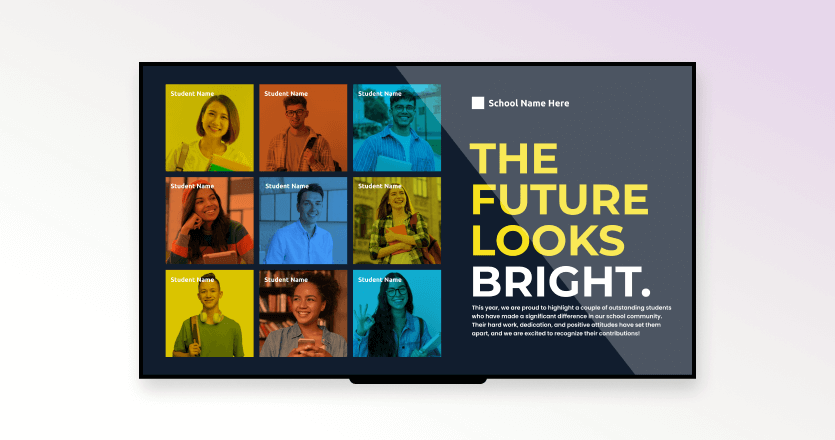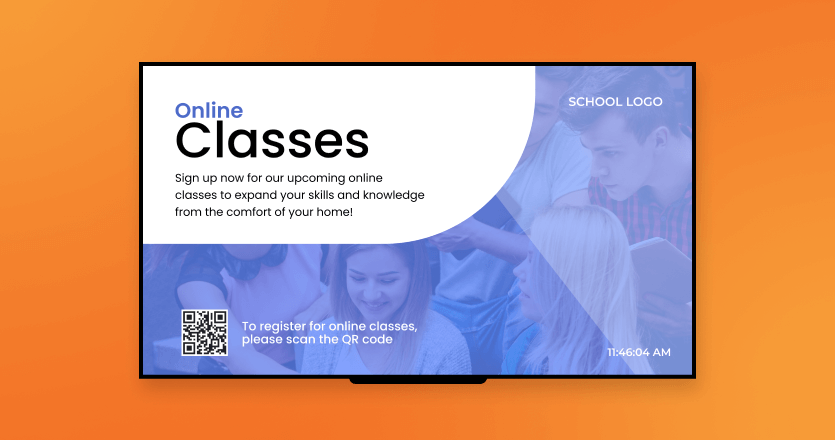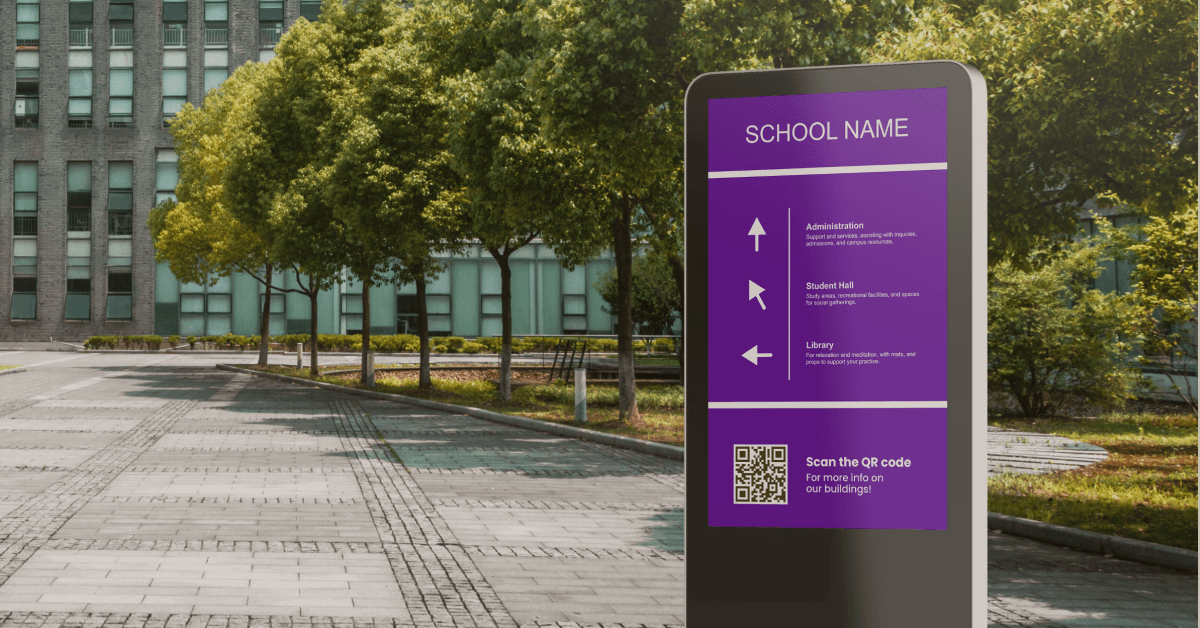Campus signage design can turn navigating a college campus into an adventure, where the proper signage makes all the difference. Beyond simple wayfinding signage, well-designed signs shape first impressions and create an inviting atmosphere. In today’s tech-savvy world, digital signage takes this to the next level with dynamic, interactive solutions. Enter Yodeck, a leader in digital signage, transforming campus communication and engagement. Discover how attractive signage and Yodeck’s innovations are reinventing campus life.
The importance of attractive campus signage
First impressions matter
The campus signage is among the first elements encountered when visiting an institution. Well-designed, aesthetically pleasing signage conveys professionalism, care, and attention to detail. It reflects the institution’s commitment to quality and can significantly influence the perceptions of prospective students, parents, and visitors.
Enhancing navigation and accessibility
Clear, attractive signage improves navigation across the campus, making it easier for new students, visitors, and even staff to find their way. This is especially crucial in large campuses where finding specific buildings, departments, or services can be daunting. Effective signage enhances accessibility, ensuring everyone, including those with disabilities, can navigate the campus with ease.

Strengthening brand identity
Signage is a powerful tool for reinforcing the institution’s brand identity. Consistent use of colors, fonts, and logos across all signage fosters a unified visual identity that can strengthen the school’s brand. Attractive, well-maintained signs signal a well-managed institution, which can boost pride among students and staff and attract prospective students.
Fostering a positive campus environment
Aesthetically pleasing signage contributes to a positive and inviting campus environment. It can enhance the overall aesthetic of the campus, making it a more pleasant place to study, work, and visit. This positive environment can improve student satisfaction and well-being, contributing to a more productive and engaged campus community.
Digital solutions: The future of campus signage design
Digital signage brings a modern twist to traditional campus signage, offering dynamic and flexible solutions that can significantly enhance the effectiveness and appeal of campus communications.
Dynamic content delivery
Digital signage allows for dynamic content updates, meaning information can be updated in real-time. This is particularly useful for sharing essential announcements, event schedules, emergency alerts, and other time-sensitive information. Unlike static signs, digital displays can be easily and quickly updated without the need for physical changes, ensuring that information is always current.
Interactive maps and directories
Interactive digital maps and directories enhance navigation across the campus. Touchscreen displays allow users to search for buildings, departments, and services, providing step-by-step directions and detailed information. This interactivity can significantly improve the user experience, making it easier for everyone to find their way around the campus.
Enhanced engagement with multimedia
Digital signage supports various multimedia formats, including images, videos, and animations. This capability can be used to create engaging and visually appealing content that captures attention and communicates messages more effectively. For example, promotional videos for upcoming events, highlights of campus achievements, and student testimonials can all be displayed to enhance engagement and communication.

Customized and targeted messaging
One of the key advantages of digital signage is the ability to tailor messages to specific audiences. Different screens across the campus can display customized content relevant to their locations. For instance, screens in the student union might showcase upcoming student events, while those in academic buildings can display information about lectures and workshops. This targeted approach ensures that the right messages reach the right audiences.
Sustainability and cost-effectiveness
While the initial investment in digital signage can be significant, it offers long-term cost savings. Digital signs eliminate the need for constant printing and replacement of physical signs, reducing waste and contributing to sustainability efforts. Moreover, the ability to quickly update content reduces the labor and materials associated with traditional signage.
Conclusion
The design and implementation of campus signage are crucial elements in shaping the overall experience of students, staff, and visitors. Attractive and well-thought-out signage not only improves navigation and accessibility but also enhances the institution’s brand identity and creates a welcoming campus environment. By incorporating digital signage, campuses can leverage dynamic, interactive, and engaging content to communicate more effectively, streamline updates, and ultimately create a more connected and informed campus community. As educational institutions continue to evolve, embracing digital signage will undoubtedly become an integral part of creating smart, efficient, and aesthetically pleasing campus environments.
